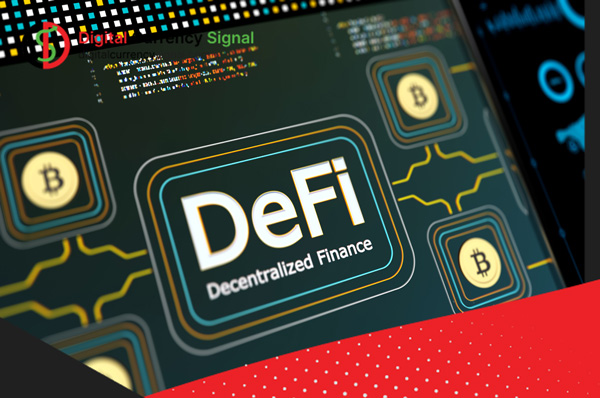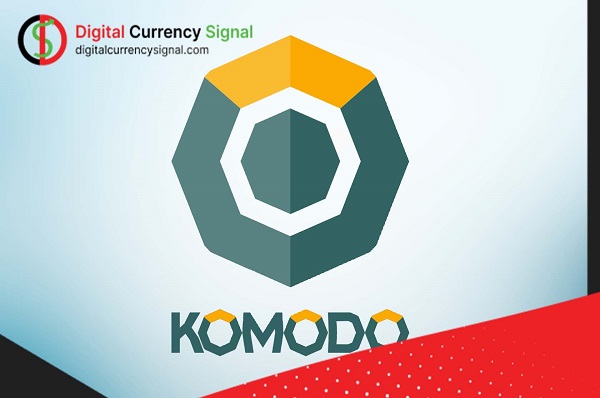Risk taking and speculation are two integral parts of all economic and financial markets. History shows that without proper regulations, safeguards and proper conduct, financial markets are more vulnerable to fraud, extortion and economic crisis. Sometimes these crises and extremism become systematic and damage the stability of the entire economic system. In the worst cases, financial collapse leads to economic stagnation, severe social divisions and even severe political conflicts. Another point is that economic conditions, technology and human behavior change over time, so it is necessary to constantly change and evolve to deal with the systemic risk of DiFi. Stay tuned until the end of the article for further discussion of this issue and ways to mitigate DeFi systemic risk.
What? What are the systemic risks of DiFi?
In a network consisting of interconnected parts, there can be a risk and the occurrence of a disturbance in one of the parts will spread to other parts of the network and cause a general problem. From a traditional financial perspective, DeFi’s risk analysis is always closely related to institutional or organizational failure and thus all our fees significantly increase the cost of investing in the said platform.
A clear example of this problem is the way banks are managed and their bankruptcy process. Such an event in the banking system leads to bankruptcy of the institution. Banks usually lend to each other and interact financially with each other, so errors and mistakes in this area can lead to dominoes or bankruptcy.
In general, 3 broad assumptions have been confirmed in the systematic analysis of risks and their causes:
Contagion or dissemination of information: Depositors’ predictions and expectations about the possibility of a crisis leading to bank failure.
Direct contagion: This type of systematic risk arises from financial transactions in lending or lending at the level of interbank systems or from exposure to other financial systems, such as intercompany credit chains.
Exposure to common risks: The amortization of assets is the same as the risks associated with sectors and parties within the financial system that hold similar or related assets.
Theory of diffusion graphs
In this section, we study and analyze contagion risk due to brevity and inherent error based on graph theory. If the system has additional links and connections to help distribute the loss flows among the nodes of the network according to their capacity, it can be expected that the said network will be more resistant to infections and possible problems. The desired effect in the context of interconnected systems is guaranteed only in the case of small disasters and special shocks and under very severe conditions;
1) In a hypothetical network N, a loss flow is introduced along the projection tree.
2) All nodes in the network have the same loss absorbing capacity and the same emission level.
In the figure above, the imaginary shock and loss starts at the initial node marked with the dotted line. This connection between connected nodes distributes the hypothetical damage to those parts of the network that are not involved in the event. Consequently, the resulting losses are distributed over a larger number of nodes and the impact of the process on each node is reduced. Despite all these explanations, if the damage is serious and significant, the communication between the nodes will cause a disaster, in other words, a cascading disorder in the entire system.

In an environment of closed paths and loops, such a network creates a phenomenon called unequal distribution of potential losses. The connection point of node B with E creates a closed path. This means that in the event of a failure, node E bears the potential loss and no loss is shared between nodes C and D. If nodes C, D, and E have the same absorbing capacity, the resulting link is created starting from our hypothetical dashed line. If this happens, the system is better equipped to resist and deal with the risk of possible transmission.
Therefore, it can be concluded that a network with a lower degree of connectivity will be a tree network with a higher probability. In contrast, networks with a higher level of connectivity include closed loops and pathways. A higher level of connectivity leads to a greater variety of loans and advances. On the other hand, adding links and communication paths to the core of the network increases the number of cycles and closed paths, and as a result, the benefits of decentralized diversity are also reduced.
In general, it can be concluded that when the level of network connectivity is at its peak. The benefits of facility diversity will also be at their maximum. Connectivity improvements generally occur in networks with a smaller proportion of the number of communication links between nodes, therefore in networks with the highest possible level of connectivity. It shows a significant level of resistance to the potential risk of infection.
Investigating DeFi Systemic Risk in a Blockchain Environment
Until this part of the article, we only talked about the DeFi method of systematic risk analysis, the risk associated with a network consisting of generalized nodes that can be assigned to various small and large networks. At the same time, as the complexity of the target system increases, Defy’s systemic risk also increases. So far, blockchain technology has radically changed the structure of the derivatives market.
On the other hand, central actors and institutions operating in this sector create systemic risk by placing large institutions at risk of bankruptcy. Decentralization of blockchain payment operations can reduce the risk of excessive centralization. An ideal blockchain-based system could decentralize payment functions and distribute the resulting tasks among participating network members without creating unequal pressure.
Let’s imagine a decentralized payment system that reduces systematic risk through default error propagation. In this example, the main challenge of implementing reconciliation functions is to combine the determination of the amount of money available with the resolution of disputes across a large portion of the payment domain. Under the blockchain consensus mechanism, these two problems can be resolved automatically rather than relying on an intermediary. This method reduces waste of time and financial resources. Therefore, blockchain systems increase the speed of recovery of banks’ non-performing assets and liabilities related to high-risk transactions.
Finally, it turns out that this whole story is nothing but a hoax! Blockchain systems simply claim to be decentralized. We all know that we need different forms of governance and we are interested in a consensus approach to enjoy a level of governance. Due to the large number of annual profits and the high effort in Decentralization or DeFi in general and the presence of insufficient insurance with this level of activity, we see a lot of weakness in this area. The integrated nature of some DeFi schemes makes it possible for the overall state of the system to deteriorate in the event of a crash.
Factors influencing the reduction of DiFi systemic risk
- The systematic risk reduction defense is a topic with a long history in the fields of economics and finance studies. As DeFi grows and integrates with other financial sectors, the relevance of the traditional security sector in this context becomes even more apparent. It will take years to understand what is unique about today’s technology and economic conditions. Taking training courses in other fields can help a little.
- Like rooms in a house or building, economic units are linked together by contracts and financial obligations. The digital financial system, of which DeFi is part, integrates technology with the economy, using computers and software that manage financial information and transactions. The higher the level of integration and communication, the more likely it is that risks and inefficiencies in one part of the system will spread to other parts.
- Before choosing the right method to reduce the risk of the process, it is important to identify the different risks that have organizational consequences. In DiFi, systemic risks are those risks that lead to significant financial losses for companies. These types of risks lead to the failure of various institutions, networks or legal systems and thus threaten economic and social stability.
- Factors that create this type of risk include a lack of understanding of system complexity, gaps in cybersecurity, poor management, excessive financial risk (no insurance or risk), and poor underwriting conditions. Masu. There is a lack of transparency, increased fraud, and a lack of oversight and regulation, especially in the areas of market integrity and consumer protection.

- As with fire prevention, one of the most important measures to reduce systemic risks when fighting fires is to prevent them from happening. Systemic DeFi risk management depends entirely on how people, companies and networks manage solutions. The effectiveness of this management depends on the level of knowledge and tools in the community, as well as the level of respect for best practices.
- There are many ways to increase security in DeFi. Depending on these conditions, legislators and private marketers participate in these methods. The work of salespeople is often self-organized.
- Historically, the combination of these two letters was mainly used in writing. Of course, in some periods, due to systemic crises or the inability of the private sector to implement self-regulatory legislation, legislation moves toward public law. In general, the more prudent and effective self-regulation in crisis management and consumer protection, the less political support legislators have. As a result, the overall regulation and oversight of DeFi is highly dependent on the nature and extent of self-regulatory efforts put forward by the private sector.
- Similar to the history of fire and building safety, insurance companies can play a very important role in promoting best practices in reducing systemic risk in firefighting. There is considerable overlap between insurers, DeFi providers and end users, all of whom are looking to achieve a high level of security. Currently, insurance companies play an important role in managing the security of smart contracts, but a more coordinated DFI risk management program, risk insurance, and disaster mitigation techniques are necessary.
- Insurers can be a source of systematic uncertainty depending on how they manage their money. Therefore, DeFi sponsors should continue to evaluate their exposure to financial and technological risks. These risks can be partially mitigated through reinsurance contracts. Over time, depending on how the DeFi space evolves, we may need some form of global insurance and support from institutions like central banks.
- DeFi, unlike traditional finance, has features such as being digital, transparent and automated. The more DeFi relies on public open source code and public ledgers, the easier it is to implement systems such as risk simulation, stress testing, monitoring, early warnings, circuit breakers, insurance coverage, damage investigations, reporting and other risk mitigation measures. will be. These measures should be able to reduce the likelihood of unfortunate events occurring and the damage they cause, without jeopardizing user privacy and hindering the growth of DeFi. For example, in modern fire prevention methods, instead of restricting the entire building, only areas where fire can spread easily are restricted.
Useful Articles



